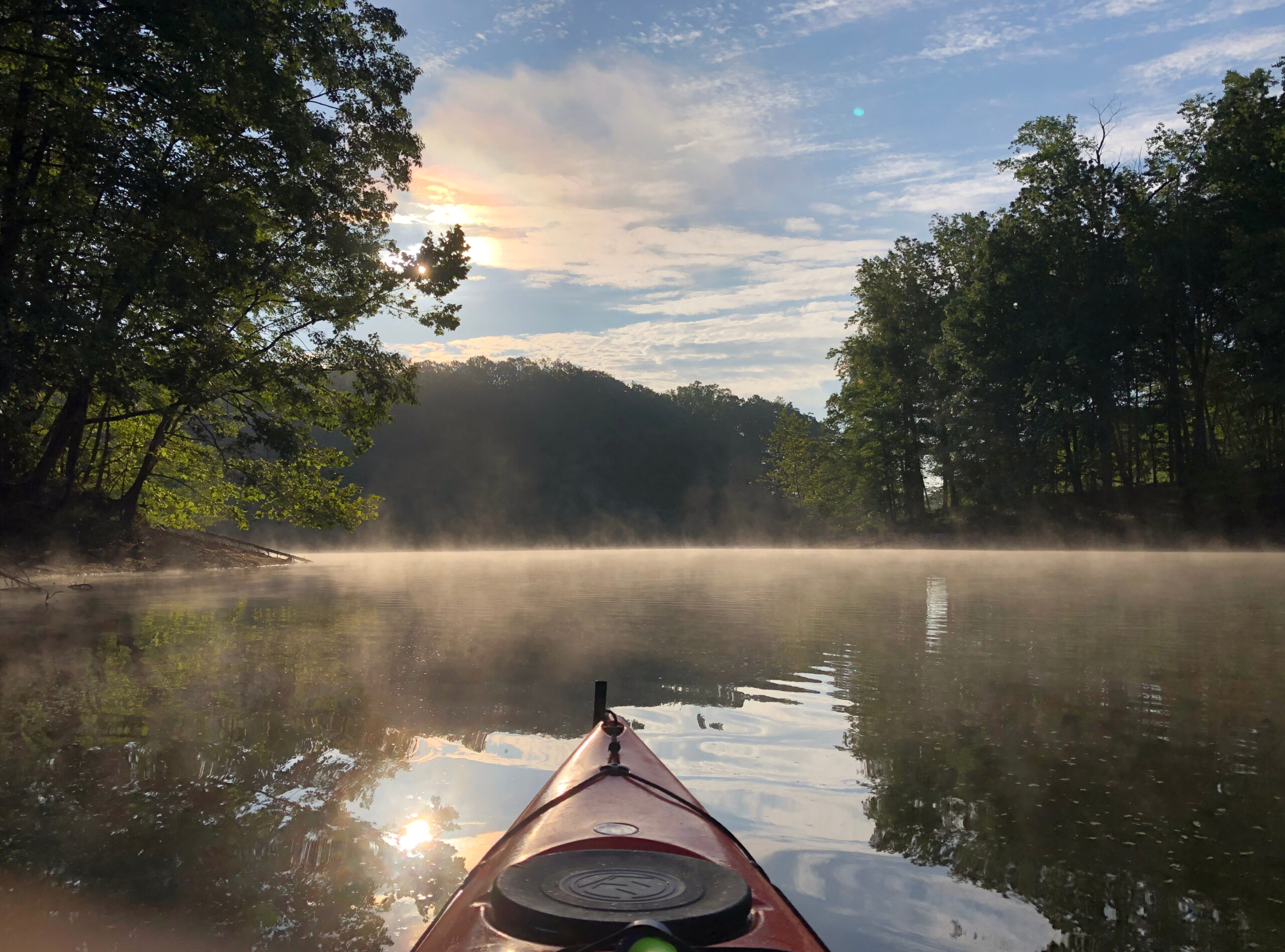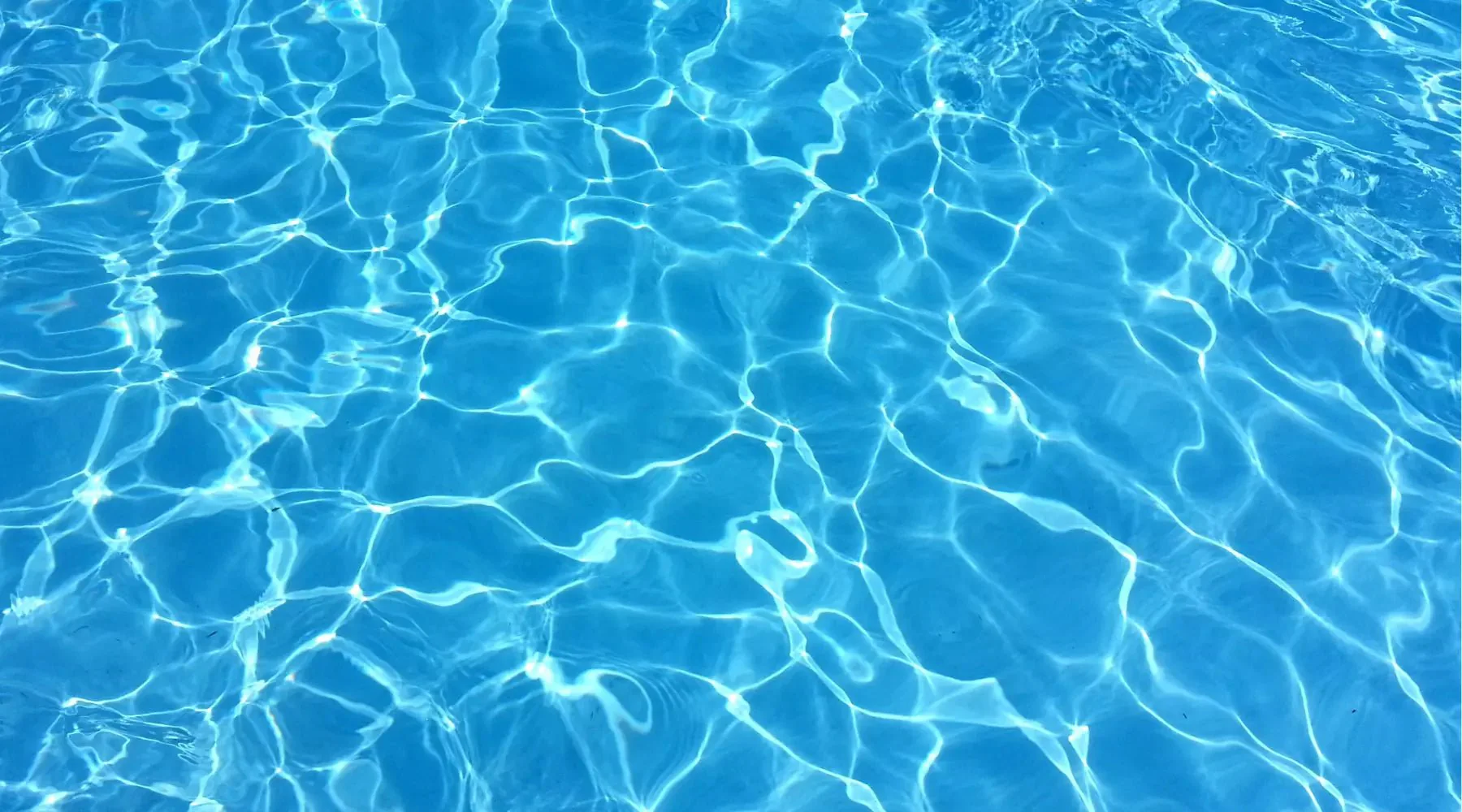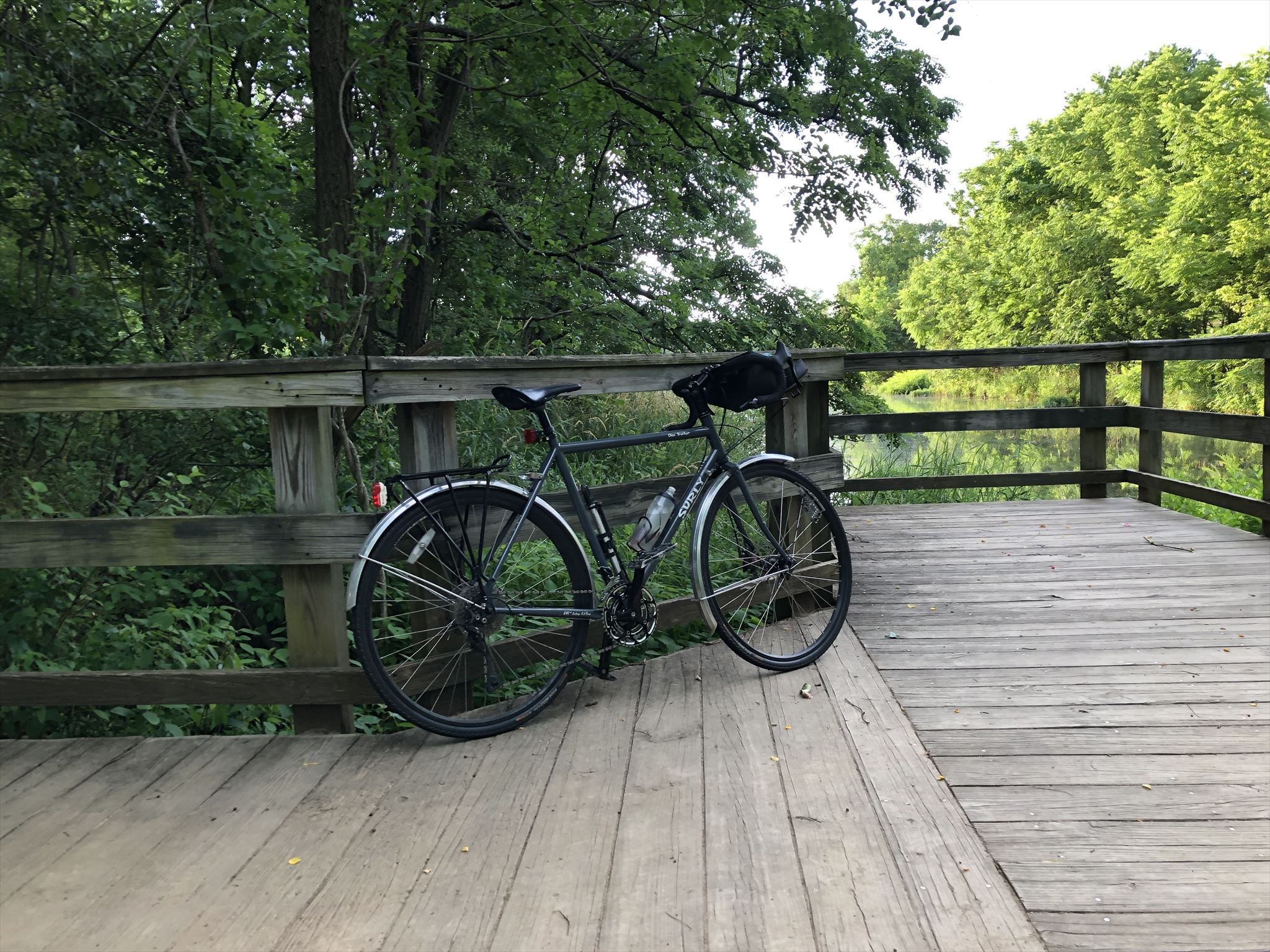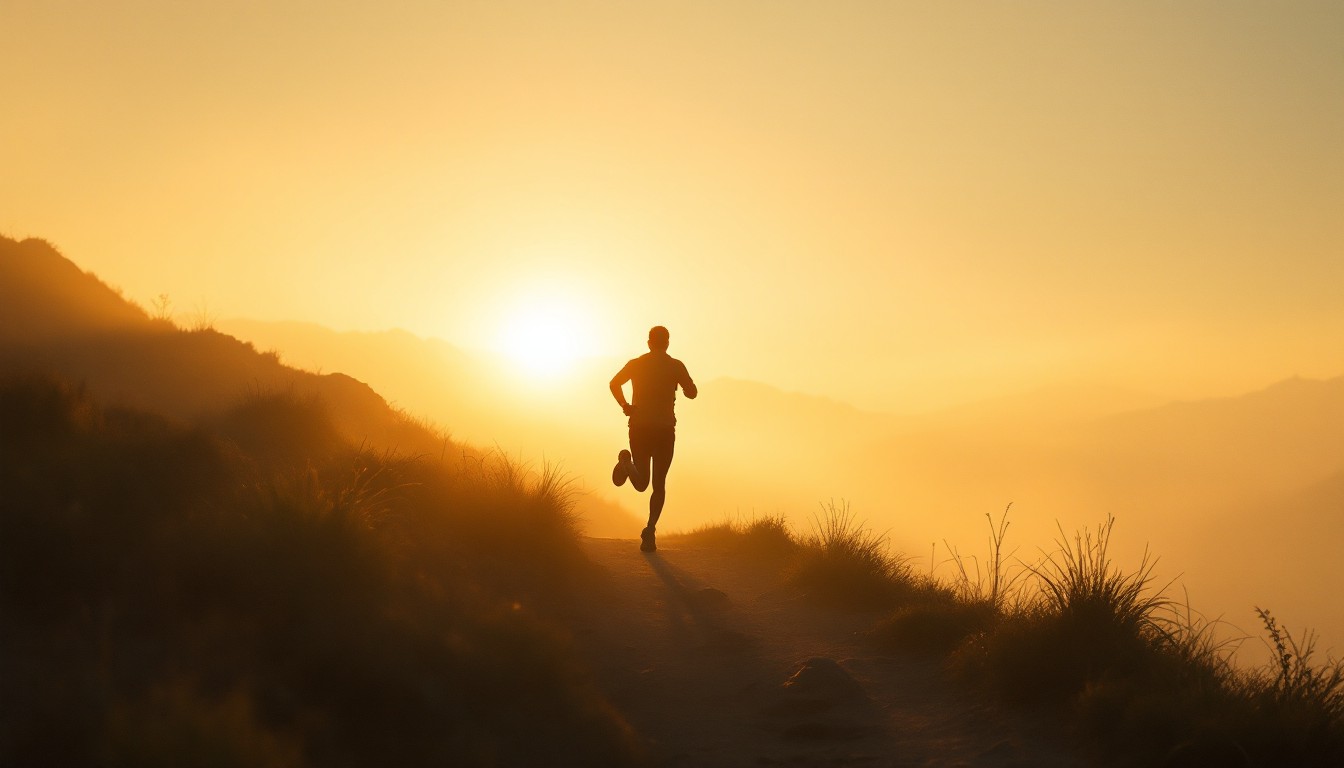I realized after swimming today that I essentially swam an Olympic individual medley (although slightly out of order) for the first time. I swam 3 sets of 240 strokes each: 60 breastroke, 60 freestyle, 60 butterfly, and 60 backstroke. Backstroke is still decidedly a work in progress. I made it through 3 sets of 60 strokes for the first time, but still feel a little bit uncoordinated at times. At one point, I inhaled a bunch of water through my nose, which forced me to stop and cough it all up. I also noticed some calf stiffness after the swim, particularly on the right side. I am assuming that this is because I’m still not fully relaxing my ankles, which I’m hoping will improve as I get more comfortable with the stroke. I’ve been getting better in that department with freestyle, but I think my kicking could use some improvement with both strokes.
Blog
-

Paddle Notes
We paddled at Rocky Gorge Reservoir this morning, for the first time since 2020. We used the launch at Scott’s Cove Recreation Area, which is within the magical 20-minute drive radius of home, and paddled about 5.5 miles, looping out to the US 29 overpass and back. With the oppressively humid air and the predicted high of 90°F later today (not to mention the daily thunderstorms), we got out early, putting in at 8:30 and taking out almost exactly 2 hours later. In addition to the humidity, there was very little wind, but fortunately, the sun mostly stayed behind clouds while we were out. On the return leg, we even had some light showers, which felt very refreshing. It was not a bad paddle, and there were several other people out on the water on this quasi-holiday Monday morning. The only thing keeping me from coming here more often is the $5/person fee that WSSC charges for a daily watershed usage permit. It’s not that I mind paying the fee, it’s just that there are other nearby places that are just as convenient and free. With all of that said, it’s a nice place to paddle, and I think I’ll try to get out here once or twice a year going forward.
-

Brew Notes
- Beans: Lost Dog Coffee “Mocha Sidamo” dark
- Grind: “Finer end of medium” – 1.5 turns on the JX PLUS 3 clicks, or 48 total clicks
- 85°C water
- 16 grams coffee / 200 grams water
- James Hoffmann’s Ultimate Aeropress Recipe
I’ve used a different recipe with these beans several times, with pretty good results, but I just wanted to try something different. I decided to try yesterday’s recipe, with a couple of tweaks: 16 grams coffee (vs 15), 85°C water (vs 90°C), and 48 clicks on the JX (vs 42, or slightly coarser). Compared to the recipe I’ve previously used with these beans, this one uses the same water temperature, with a coarser grind (48 clicks vs 36) and a longer brew time. The other recipe also uses less water for the brew (160 grams) and 40 grams bypass water. Today’s cup turned out OK, but maybe slightly underextracted. Next time, I could either increase the water temperature to 90°C, or go with a slightly finer grind.
-

Swim Notes
We certainly had weird weather this past spring. Early on, it was wet, and then we had drought conditions for a couple of months. Now, the pattern has changed again, and early summer has alternated between cloudy, humid, stormy days and hazy, smoky days, depending on the wind direction. As a result, the sun hasn’t been really strong at all this summer, so the pool water has stayed pretty cool. Today, I swam in 78°F water, which is almost unheard of on July 1. It’s an almost perfect swimming temperature, though.
I’ve finally decided to try to swim backstroke regularly on the tether. It’s the only Olympic swimming stroke I haven’t really spent much time with. My first attempts a few days ago were pretty awkward. I was flailing all over the place, getting winded, and ending up at all kinds of crazy angles to the pool wall. Today, I was able to get straightened out a bit and complete a full set of 60 strokes without gasping for air at the end. I’ll keep working on my coordination, and hopefully, I’ll continue to improve. My goal is eventually to split my swimming equally between freestyle, breaststroke, butterfly, and backstroke.
-

A tale of 2 brews
- Beans: Lost Dog Coffee “La Esparanza” medium/medium-dark
- Grind: “Finer end of medium” – 1.5 turns on the JX minus 3 clicks, or 42 total clicks
- 90°C water
- 15 grams coffee / “around” 200 grams water
- James Hoffmann’s Ultimate Aeropress Recipe
I’ve been using a different recipe with these beans, and while the first cup was great, I’ve had mixed results with subsequent cups. After a slightly bitter cup this morning, I decided to try the James Hoffmann recipe this afternoon. Two days ago, it gave me great results with medium roast Starbucks beans. However, my brain must have been somewhere else this afternoon. I used the same grind setting and water temperature, which I guess you can argue are the two most important parameters. However, I forgot to zero my scale before adding the water to the brewer, so I’m not sure how much I used. I just filled it up to what looked like 200 grams. It might have been a little less. Then, I turned my kettle off while the coffee was brewing, forgetting that I was using the stopwatch to time it. So, I guesstimated the initial steep time as well. I think it was around 2 minutes (per the recipe). The swirl, secondary steep, and plunge went off without a hitch, though.
As I was winging this, I was betting myself that it was going to end up being the best cup of coffee I ever tasted. Well, I’m not sure I’d go that far, but it was pretty darned good — definitely better than any other recipe I’ve used with these beans — and who knows if I’ll be able to reproduce it. Go figure. 😀 I guess it goes to show that you don’t always have to be 100% precise to brew a great cup of coffee with the Aeropress. Doing it consistently is still a work in progress, though!
-

Saturday Ride
Super soupy weather for my bike ride this morning. I rode to Odenton and back, with a quick detour into PVSP, for a total of just over 30 miles. The weather was mostly cloudy and in the 70s, with a dewpoint around 72. I tried out one of my new Sweathawg helmet liners, and it worked great!! I bought two of these, one regular and one ‘X2’ (with a thicker absorbent brow pad). I first tried the X2 in my road bike helmet with the fabric visor also in place, and it was a tiny bit too tight, so I put the regular in and rode with that. I was out for right around 3 hours, and didn’t get a single drop of sweat in my eyes. I’ll use the X2 in my mountain bike helmet, where I expect it’ll fit fine. I tend to sweat more on my MTB, so the extra thickness will come in handy there. I also may end up ditching the visor on the road bike helmet, as it blocks more of my upper field of vision than I would like, and I found my neck getting a little stiff today because I likely was tilting my head upward to compensate. The next time I ride on a sunny day, I’ll try the helmet without the visor and see how it works. Without the visor, I think the X2 liner would fit fine, although based on today’s experience, I may not need it for road riding. Once I’m set on which type I’ll be using more, I may end up buying another of these. They’re well worth the money if they can keep my eyes from burning on warm/humid days.
-

Brew/Run Notes
I decided to try a different Aeropress recipe with my Starbucks beans today, as my last couple of cups have been on the bitter side.
- Beans: Starbucks House Blend medium roast
- Grind: “Finer end of medium” – 1.5 turns on the JX minus 3 clicks, or 42 total clicks
- 90°C water
- 15 grams coffee / 200 grams water (1:13.3)
- James Hoffmann’s Ultimate Aeropress Recipe
I followed the recipe pretty closely, except I used 15 grams of coffee where the recipe calls for 11 (although that assumes a light roast) and I did pre-wet the filter with cold water. I used two paper filters that are on their 5th or 6th cup. This produced a pretty nice cup with less bitterness than I had been getting lately with a different recipe. Compared to that recipe, this one uses a slightly finer grind with a lower water temperature. I do like Hoffmann’s scientific approach to brewing with the Aeropress, and this is a pretty easy recipe to follow, so I’m sure I’ll be tinkering around with it some more.
Another bad air day here in Maryland thanks to Canadian wildfires. I’m sure this isn’t the first summer where there have been wildfires in Canada, but it’s the first year I remember it having such a large effect on our weather here. Maybe this is just the first year everybody is paying such close attention to it. Who knows? I got out of the house at 6:30am this morning, when the temperature was still in the low 60s, and I ran 7.7 miles at a very relaxed pace of 11:30/mile. It was a pretty good run, with none of the energy issues that have plagued me over the past week or so.
-
Biking & Brewing
I didn’t get out of the house until 9:15 this morning (kind of a recurring theme this week), but had a pretty good, albeit short, ride into work. In spite of a “code orange” air quality alert, it felt more pleasant outside than any of the past several days. I was surprised at how many people were in PVSP this morning, given that it was a Wednesday, and the area got 2″ of rain last night. I guess 90 minutes makes a big difference, as the park is almost always (mostly) empty before 8:00. I hope to buck the lateness trend tomorrow and get out for an early run.
I brewed this recipe this morning with my Lost Dog “Mocha Sidamo” beans, ground at 1 rotation + 6 clicks on my JX (same setting I’ve been using for a while). Poured for 25 seconds, steeped until 1:25 with a quick swirl at 1:00, pressed until around 1:55, added 40 grams bypass. I’ve gotten to where I can brew this recipe, start to finish, in about the same time it takes me to brew a cup of pre-ground coffee in the drip machine. It does require more coordination than the drip machine, but the finished product is (usually 😀) superior. Today’s cup was pretty good, with a tiny touch of bitterness that I haven’t tasted with these beans before. I wonder if the swirl, or the tiny bit longer steep time, made any difference.
-
Run
This was another day where I couldn’t get out to run until 11:00am. I had intended to run around 6 miles, but made the same mistake as the other day, where I started out trying to run too fast. My first two miles clocked in at around 9:45, and then I started heating up and slowing down. By 4 miles, I was struggling, and ended up cutting the run short. Total distance was around 5.7 miles. The weather was god-awful humid, and I ended up drenched in sweat, so much so that I actually drank some Gatorade afterward, for the first time since at least last summer.
I would probably be better off doing deep-water running in the pool when I can’t get out early in the summertime, but I find that to be boring. I did do it a couple of times last summer on really hot days, and expect I’ll break down and do it once or twice this year.
-
Today’s Brew
Brewed this again today with a couple of minor notes — I poured maybe a tiny bit more slowly, and started pressing at 1:30 instead of 1:20. I pressed until 2:00 and topped up to my usual 200 grams. I used a regular mug instead of my Hydro Flask mug, and was reminded what a big difference an insulated mug makes with lower brewing temperatures. The cup cooled off very quickly, but that was kind of what I wanted today. It was a good cup — not quite as strong-tasting as my last one, but well extracted.
I need to figure out a way to organize these notes to make them easier to refer back to. I might just try creating pages on the site grouped by beans. Not quite sure yet…